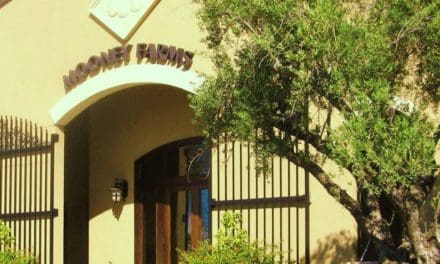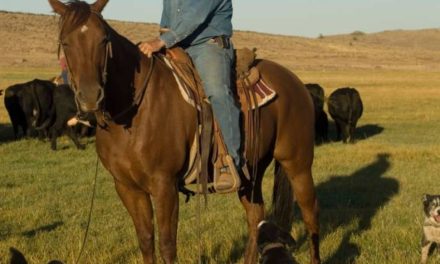Meanwhile, Back At The B&V Pyle Ranch 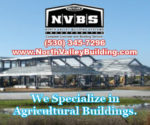
By Melissa Wynn
Many of us think that a luscious roast beef dinner or chilly gallon of milk begins at our local grocery store. But during a recent visit with Hay Boss, Bob Pyle, of B&V Pyle Ranch near Susanville I learned that it really begins in the hay field.
We have all heard the saying that, “you are what you eat”. Perhaps what is 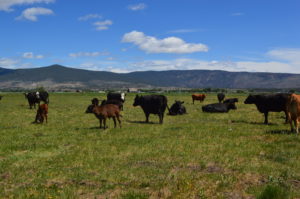 more accurate is that you are what you eat, eats.
more accurate is that you are what you eat, eats.
Did you know that dairy cattle and horses eat different kinds of hay? Dairy cattle are fed a special variety of hay to maximize their health and the nutritional value of the milk we all enjoy.
Some people think growing hay must be simple, plant it and watch it grow. 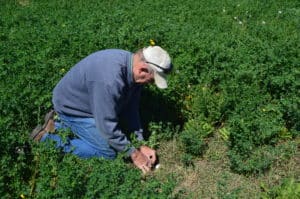 But, watering the hay is actually a digitally monitored and controlled precise science. The sprinkler system is programmable and uses technology very similar to a GPS. Mr. Pyle sets the system to be certain the entire crop is watered as efficiently as possible to maximize absorption into the soil and to preserve water during this time of drought in California. For further care of the plants and water conservation, he also regularly checks the system installed to read the moisture content of the soil. If a good rainy day brings the needed moisture he will reprogram the sprinkler system to accommodate.
But, watering the hay is actually a digitally monitored and controlled precise science. The sprinkler system is programmable and uses technology very similar to a GPS. Mr. Pyle sets the system to be certain the entire crop is watered as efficiently as possible to maximize absorption into the soil and to preserve water during this time of drought in California. For further care of the plants and water conservation, he also regularly checks the system installed to read the moisture content of the soil. If a good rainy day brings the needed moisture he will reprogram the sprinkler system to accommodate.
Mr. Pyle explained that a typical hay harvest requires four steps: mowing, 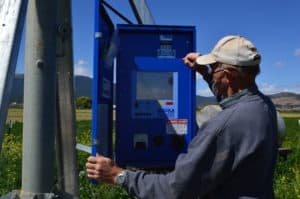 raking, baling and stacking. Having the hay mowed is critical. Dairy hay should be mowed after the plants get their flower buds but before those flowers open. It is at this stage that the dairy hay has the best total digestible nutrients, or TDN. The industry TDN standard is a reading of fifty six or better. This all important number is determined by testing samples taken from the haystack and sent to an independent laboratory and is crucial in determining the market value of the crop. Consistency is key when the final product determines the quality of America’s milk.
raking, baling and stacking. Having the hay mowed is critical. Dairy hay should be mowed after the plants get their flower buds but before those flowers open. It is at this stage that the dairy hay has the best total digestible nutrients, or TDN. The industry TDN standard is a reading of fifty six or better. This all important number is determined by testing samples taken from the haystack and sent to an independent laboratory and is crucial in determining the market value of the crop. Consistency is key when the final product determines the quality of America’s milk.
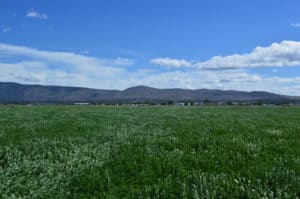 After the hay has cured until it is ninety percent dry, Mr. Pyle climbs into the tractor and rakes the hay into rows for baling, called windrows. Windrows lay in the field for a very important drying before being baled. Dry time is set mostly by weather factors like, temperature, wind, and humidity. At B&V Pyle Ranch they bale no hay before its time. Baling hay must be precisely timed and Mr. Pyle has been practicing the art of knowing that time since buying his beautiful spread in 1974. Mr Pyle tells MVL ,“You have to bale when it is cool and moist.” Often the perfect time begins at 3:00 a.m. and when it does Mrs. Pyle changes her business manager hat for a baseball cap and climbs into a baler too. Whatever it takes to put the hay up in its prime is what its all about at this nostalgic, family owned and operated Lassen County ranch. Hay that is baled too dry is undesirable on the market and baled too wet can rot on the inside of the bales which can lead to spontaneous combustion. Baling hay is not for for the faint of heart but is serious hard work. The biggest bales put up by the dedicated Pyle family weigh up to 1400 pounds.
After the hay has cured until it is ninety percent dry, Mr. Pyle climbs into the tractor and rakes the hay into rows for baling, called windrows. Windrows lay in the field for a very important drying before being baled. Dry time is set mostly by weather factors like, temperature, wind, and humidity. At B&V Pyle Ranch they bale no hay before its time. Baling hay must be precisely timed and Mr. Pyle has been practicing the art of knowing that time since buying his beautiful spread in 1974. Mr Pyle tells MVL ,“You have to bale when it is cool and moist.” Often the perfect time begins at 3:00 a.m. and when it does Mrs. Pyle changes her business manager hat for a baseball cap and climbs into a baler too. Whatever it takes to put the hay up in its prime is what its all about at this nostalgic, family owned and operated Lassen County ranch. Hay that is baled too dry is undesirable on the market and baled too wet can rot on the inside of the bales which can lead to spontaneous combustion. Baling hay is not for for the faint of heart but is serious hard work. The biggest bales put up by the dedicated Pyle family weigh up to 1400 pounds.
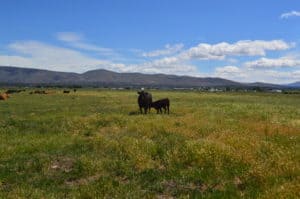 Mrs. Pyle’s family has a long history of ranching in this area that she has always called home. Spanning the generations her ranching roots can be traced back to her great grandparents, the Powers family, that had their spread in the Big Meadow that now lies beneath Lake Almanor.
Mrs. Pyle’s family has a long history of ranching in this area that she has always called home. Spanning the generations her ranching roots can be traced back to her great grandparents, the Powers family, that had their spread in the Big Meadow that now lies beneath Lake Almanor.
Mr. Pyle is a man of many talents and always has several irons in the fire. Besides farming his own hay for market, our industrious neighbor also mows, rakes and bales hay for other growers, making him responsible for over 1000 acres of the hay that must be harvested three time per year.
Feeding the cattle that provide the milk is just the beginning for the hard working Pyle family. They also professionally provide the beef we all enjoy at a good Sunday dinner . Mr. Pyle’s son, Rob Pyle, is the Cow Boss back at the ranch, managing the herd of JH Cattle Company. Springtime is when the cows come home from their Sacramento Valley grazing grounds with the playful calves that were born starting in January.
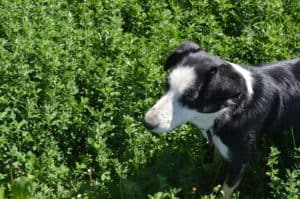 This is a very busy time at the B&V. The herd must be counted and the calves rounded up for identification. No cowboy’s bag of tricks would be complete without his faithful cow dogs. Three trusty kelpies and a spot on border collie help Rob keep the group together as they bring the cattle to pasture for the summer. In the fall a new batch of calves will arrive just in time to go graze and grow through the winter back in the valley. At around nine months to a year old the calves make their internet debut and go to market via video auction and the cycle begins anew.
This is a very busy time at the B&V. The herd must be counted and the calves rounded up for identification. No cowboy’s bag of tricks would be complete without his faithful cow dogs. Three trusty kelpies and a spot on border collie help Rob keep the group together as they bring the cattle to pasture for the summer. In the fall a new batch of calves will arrive just in time to go graze and grow through the winter back in the valley. At around nine months to a year old the calves make their internet debut and go to market via video auction and the cycle begins anew.
Not only does Mr. Pyle do his part to feed his neighbors, he has been serving them in public office for the past 34 years and currently proudly serves on the Lassen County Board of Supervisors.
Meanwhile, when lunch consists of a burger and a milk shake, think of the Pyle family that is making it all possible, back at the ranch.
Meanwhile, Back At The B&V Pyle Ranch
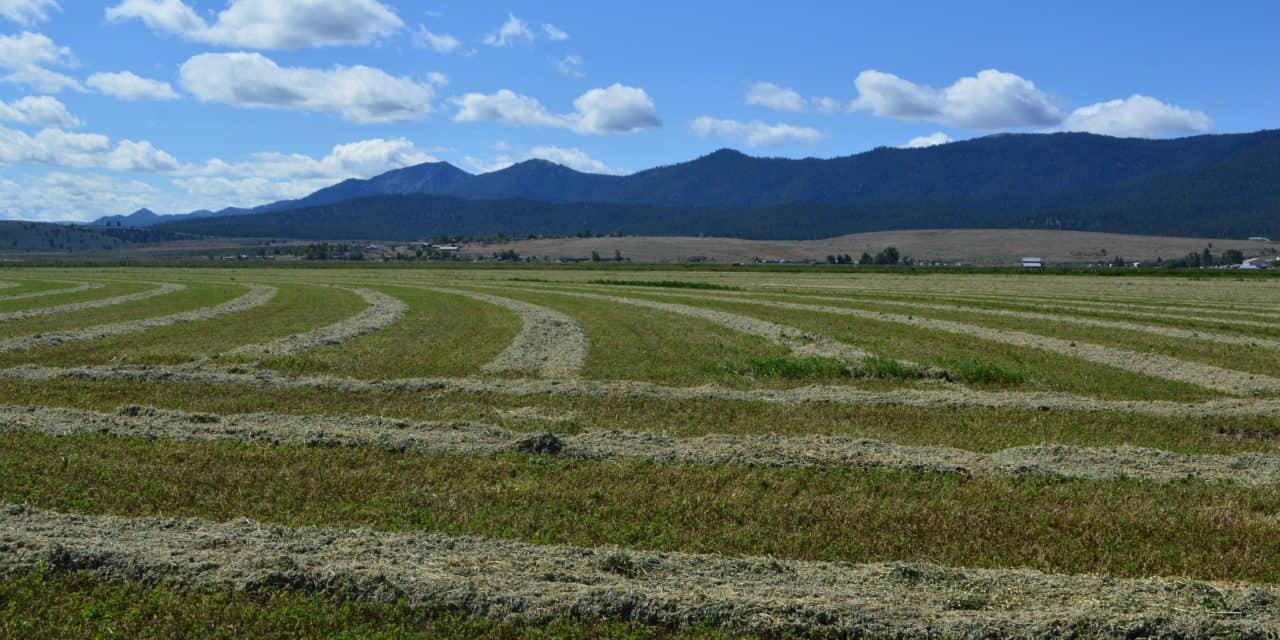
[adrotate group="14"]


